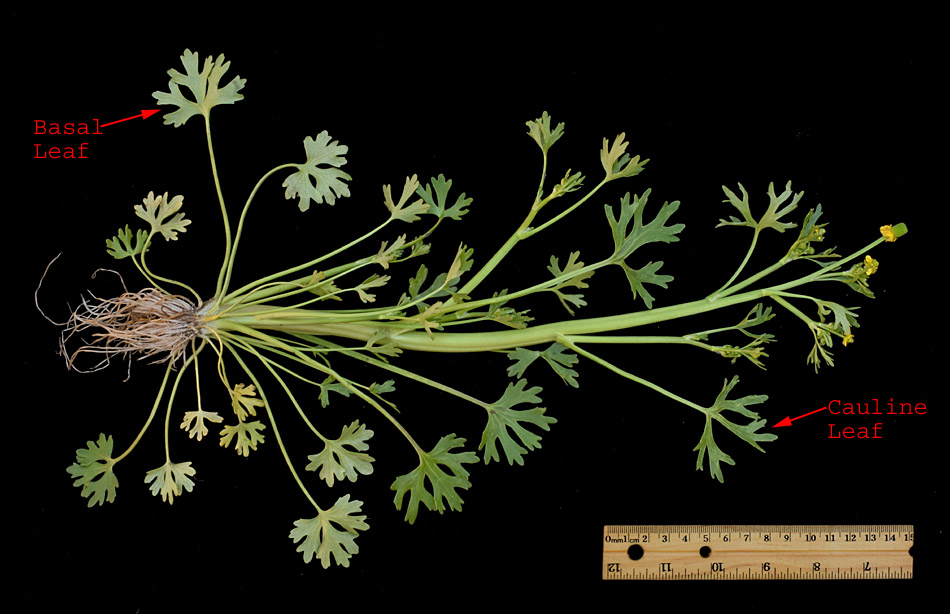 | terrestrial plants, mostly with erect stems; NOT [aquatic or creeping
mud plants, the leaves mostly floating or submersed] |
 | plants of marshy places |
 | plants larger; NOT [plants small, rarely more than 5 cm high] |
 | plants glabrous to subglabrous or puberulent; NOT [plants
villose-pubescent, especially the petioles] |
 | stems bearing several leaves and flowers; NOT [stems bearing a single
leaf and a single flower] |
 | stem and inflorescence leaves on well-developed petioles; NOT [stem
leaves and leaves in the inflorescence sessile or subsessile] |
 | leaves not finely dissected |
 | basal and cauline leaves all deeply incised or divided into distinct
segments, the cauline smaller or with few segments, or with shorter
petioles; NOT [basal and cauline leaves distinctly unlike; some or all
of the basal leaves merely toothed (or entire), most of the cauline
deeply cleft and sessile or subsessile] |
 | terminal segment of the larger leaves sessile, usually joined to the
lateral by thin tissue; NOT [terminal segment of the larger leaves
stalked] |
 | sepals usually 5; NOT
[sepals normally 3] |
 | sepals spreading or curved inward; NOT [sepals reflexed at the middle
or base] |
 | petals mostly 5 mm long or less; NOT [petals mostly more than 5 mm
long] |
 | petals yellow; NOT [petals white] |
 | achenes glabrous; NOT [achenes pubescent] |
 | beak of the achene very short, to 0.1 mm long; NOT [beak of the achene
developed, 0.5-1.0 mm long]
|

